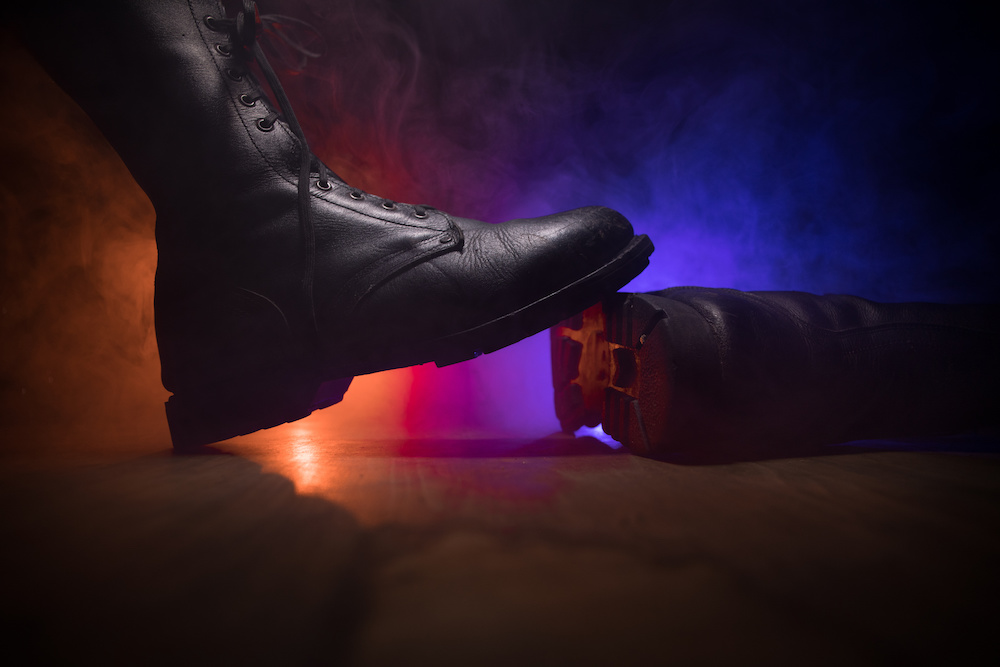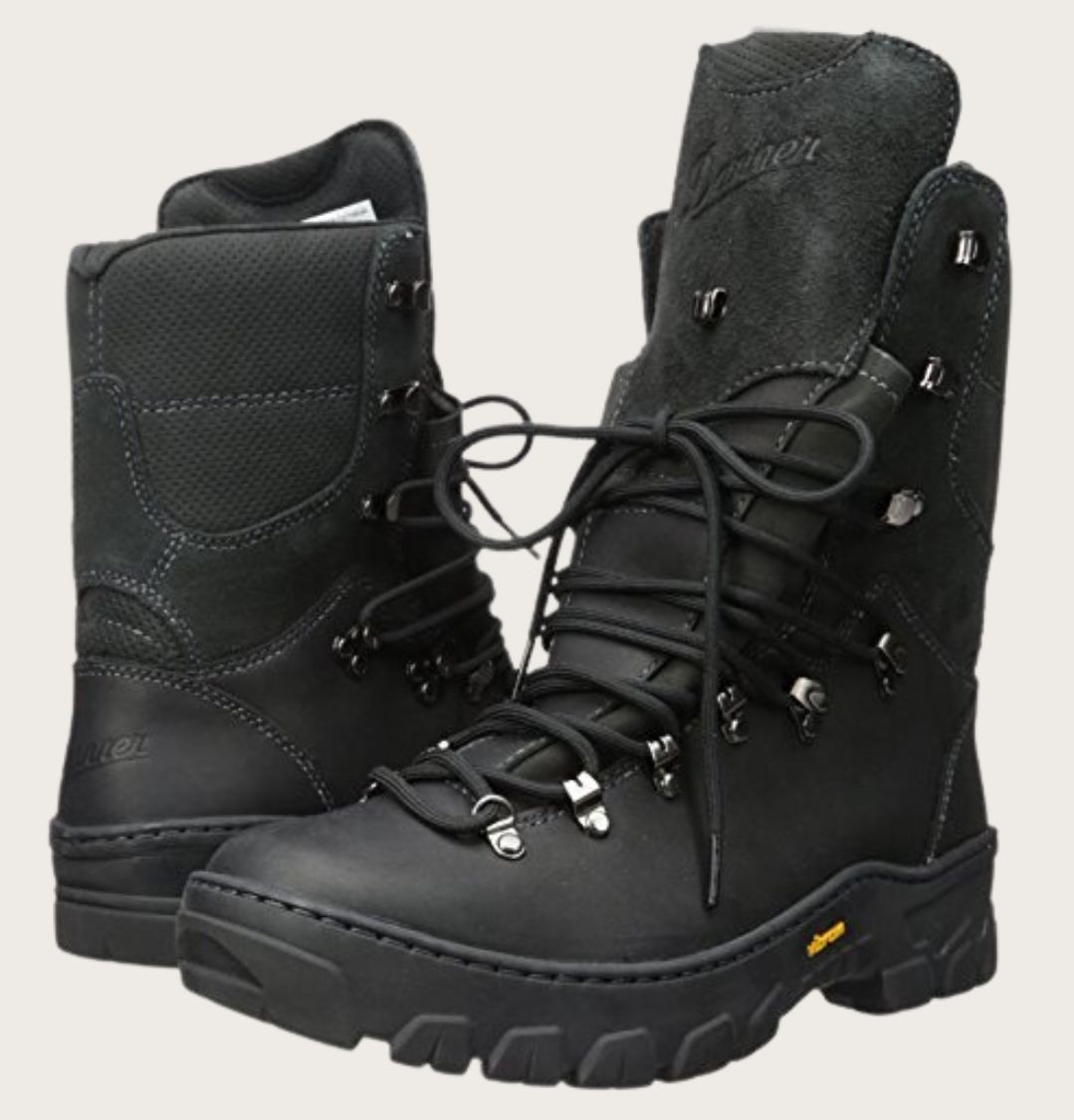Signup for our monthly newsletter and get your FREE "Tactical Gear" Guide
How Should Tactical Boots Fit?
- Home
- Tactical Boots Advice
- How Should Tactical Boots Fit

This site contains affiliate links to products. We may receive a commission for purchases made through these links.
How should tactical boots fit?
People often ask this question because tactical boots need to conform to the shape and size of your feet.
Otherwise, you could be exposing yourself to a world of pain between severe injuries and general discomfort.
This guide will explore how you can size your boots to accommodate your feet perfectly for all-day wear.
Table of Contents
How Do You Know if Boots Fit Right?
How Do You Know if Your Boots Are Too Big?
What Happens if I Wear the Wrong Boot Size?
How Should Tactical Boots Fit?
How Do You Know if Boots Fit Right?
So, how should combat boots fit? There are four main things to consider when answering this question.
Snug Fit
New shoes should feel perfectly snug along the length of your foot, except the heel.
Properly fitting military boots will have a slight slip in the heel that will disappear over time.
Once you have broken in your boots, you will notice the slippage will become less and even lesser as you wear them regularly.
Wiggle Room
Aside from your heel, the only other part of your foot with wiggle room should be your toes.
If you’ve purchased shoes in the past with tight toe boxes, you might have noticed how uncomfortable they can be.
An adequately sized toe box allows your toes to move effortlessly, accommodating any swelling your feet experience.
Wide to Wide
Once you put your tactical boots on for the first time, it’s important to note where your feet sit.
Ideally, the widest part of your foot should be at the widest part of the boot.
If you find that the placement is off, the shoe size could be too large or too small.
Testing Thick Socks
The final rule to consider when deciding if your boots fit right is to think about the type of socks you wear.
An optimal fit will allow you to don thick socks, which can help prevent chafing and blistering.
If you can’t fit a relatively thick pair of socks in your boots, they are definitely far too tight.
How Do You Know if Your Boots Are Too Big?
Knowing if your boots are too big depends on how you feel wearing them for the first time.
It should be relatively easy to tell if you’ve chosen the wrong size, especially when it comes to the heel and width.
In most cases, with large boots, the heel will have too much room for movement, as will the width.
Your feet might feel like they are slipping and sliding even after you have adequately tightened the laces.
It is also common to feel like your feet lift up from the insole every time you take a step.
However, there are certain instances where oversized boot components are beneficial, as we explore below.
What Happens if I Wear the Wrong Boot Size?
As mentioned, there are an array of health issues you could encounter from wearing poorly sized boots.
From acute injuries to repetitive foot strain, there are a few problems you have to be aware of.
Flat Feet and Plantar Fasciitis
Flat feet and plantar fasciitis are two of the most painful foot injuries you can experience.
They are also common among people who wear shoes sized too large for their feet.
When your feet aren’t adequately supported at the arch, the arches are more likely to fall.
This issue is also one of the primary reasons why people consider purchasing inserts for their boots.
Inserts and custom orthotics help make sure your arches have enough support.
Over time, you will experience a significantly lower chance of inflammation and injury.
Bunions and Hammer Toe
On the other end of the spectrum, foot injuries occur when your shoes are sized too small.
Bunions and hammertoes are the most common and can occur when you have inadequately sized toe boxes.
As your toes press against each other or your feet press against the size of your shoes, it can cause repetitive injuries.
Cramping and Fatigue
Two of the less severe issues you could experience with the wrong boot size are cramping and fatigue.
If your shoes are too big, for example, your feet will inadvertently try to cling to the bottoms of your boots.
This event can cause significant cramping even after traveling a small distance.
Over time, the more your feet try to find a comfortable position in your shoes, the more tired they will feel.
Fatigue can lead to repetitive stress injuries as well as more significant damage.
Ankle Injuries
You might not think about it at first, but improper shoe sizes can also be hazardous for your ankles.
Tactical boots have a unique upper designed for adequate ankle support.
If your boots are too small, they will hug your ankles closely, causing chafing and blisters.
With larger sizes, you will find that your ankles move too freely, which puts them at risk.
If you were to trip or fall, you could accidentally fracture or break your ankle.
How Should Tactical Boots Fit?
With an understanding of the dangers of wearing ill-sized shoes, let’s review how you can find the perfect pair.
There are several vital elements to consider to ensure you are sizing them accurately.
Heel Fit
Starting from the back of your boots, it’s important to consider the heel.
Fortunately, most tactical boots are designed to be looser in this area to allow for a break-in period.
However, if you notice your heel slippage isn’t reducing, it could mean the boot is too large.
On average, your heel should have between 1/4 and 3/8 inches of space at the beginning, reducing over time.
Once you have broken them in, the boots should fit snugly with minimal movement.
Remember, if your shoes are too loose, you will have a poor gait and lose flexibility.
Width
Another important aspect of choosing tactical boots is to consider their width.
It is far too often that people pick footwear that is a little too tight, hoping they will stretch to fit.
Although this might work with more flexible shoes, like running shoes, the theory doesn’t apply to tactical boots.
When the width of your tactical boots is too tight, it pushes against the sides of your feet, forcing them inward.
This issue can cause significant inflammation, so it is essential to ensure the width is sized correctly from the beginning.
Fortunately, the majority of boot manufacturers label the widths of every boot they create.
Typically, you will find them on a descending scale from narrowest to widest:
- AAA
- AA
- A
- B
- C
- D (Medium)
- E
- EE
- EEE
Arch Support
Arch support is crucial to knowing how should combat boots fit, especially if you have moderate to low arches.
However, those with high arches can likely get away with most boots’ basic inserts.
For someone with low to mid arches, you’ll want to consider custom inserts or orthotics.
Orthotics can be expensive but well worth the investment, especially if you are on your feet all day.
Orthotics are tailored inserts that adapt to the unique curvature of your feet and can be added to any pair of footwear.
With orthotics, you’ll notice a significant difference in comfort because your shoes will feel custom-made.
Flex Point
Centering on the middle of your boots, you’ll need to consider the flex point, also known as the breakpoint.
Many boot enthusiasts will also refer to this region as the broadest part of the boot.
It is characterized by the place where the boot bends as you walk and is where your foot flexes.
Finding a properly centered flex point is imperative, as it determines your foot alignment.
Anatomically, feet bend at the toes, where your flex point should be located, not higher or lower.
When you have an improperly sized boot, the bending occurs at the wrong spot and can rub against your sole.
The more often you walk, the more likely you are to develop elongated blisters and discomfort.
You might also begin to notice an uncomfortable pinching sensation near your toes.
How Much Room Should Be in the Toe of a Boot?
The last part of your combat boot sizing ensures you have enough room in the toe box.
Typically, when the flex point and heel are correctly sized, the toe box shouldn’t be much of a concern.
Ideally, you want at least 0.5 inches of space surrounding your toes so that they can have adequate room for movement.
However, if you notice you have too much space, it is unnecessary to size down your boots.
Some boot styles have extra space in this area to assist with swelling.
Also, there aren’t any adverse effects to having too much space for your toes.
Final Thoughts
When asking how should tactical boots fit, it is essential to consider the width, flex point, toe box, and heel cap.
Combat boot sizing is relatively straightforward, as long as you have an idea of your foot length and width.

